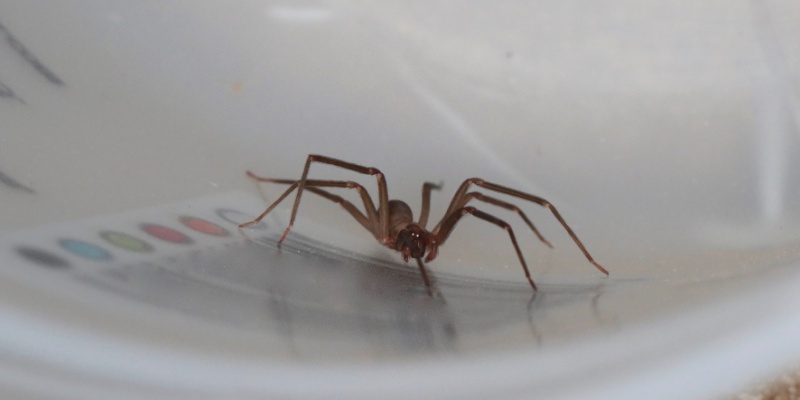Spiders can be both fascinating and unnerving, and spotting them in your home may leave you wondering why they are so prevalent. While spiders are generally beneficial creatures due to their role in controlling other insect populations, an increase in their numbers inside your home can be concerning. Understanding why spiders are making a frequent appearance in your house can help you address the issue effectively. Here’s a comprehensive look at the common reasons for spider infestations and what you can do to manage them:
Abundant Food Supply
Spiders primarily feed on other insects, such as flies, mosquitoes, and ants. If you’re seeing a lot of spiders, it’s often because there is a plentiful supply of their prey. An increase in the number of insects in your home could be attracting more spiders. Common household pests, such as cockroaches, ants, and flies, can create an attractive environment for spiders. If you have an infestation of these pests, spiders are likely to follow. Addressing the primary pest issue can help reduce the spider population as well.
Entry Points and Cracks
Spiders can enter your home through small cracks and openings in the structure. Gaps around windows, doors, and vents, as well as cracks in the foundation, can serve as entry points. Once inside, spiders can find plenty of hiding spots and establish themselves. Inadequate sealing of doors and windows can allow spiders to slip in unnoticed. Check for gaps and ensure that weather stripping is intact and in good condition. Properly sealing these entry points can help keep spiders out.
Cluttered and Dark Areas
Spiders prefer dark, undisturbed areas where they can build their webs and lay eggs. Cluttered spaces, such as basements, attics, and storage areas, provide the perfect environment for spiders. The more cluttered and less frequently cleaned these areas are, the more attractive they become to spiders. Items stacked in corners or stored in boxes can create excellent hiding spots for spiders. Reducing clutter and organizing your spaces can make it less inviting for them.
Climate and Environmental Conditions
Certain weather conditions can increase spider activity. In areas with mild climates or during specific seasons, spiders may seek shelter indoors as temperatures fluctuate. For example, in colder months, spiders may move inside your home in search of warmth. If the outdoor environment around your home is conducive to spider activity—such as having abundant vegetation or a high insect population—spiders may be more likely to move indoors.
Structural Issues
Certain building materials and structures can attract spiders. For instance, brick walls or wood piles provide excellent hiding places. Additionally, if your home has moisture problems, such as leaks or damp areas, it can create an inviting environment for spiders and their prey. Neglected areas, such as unclean gutters or deteriorated siding, can contribute to spider problems. Regular maintenance and inspection of your home’s exterior can help prevent these issues.
Inadequate Pest Control
If you do not have a regular pest control regimen in place, the presence of other insects can increase spider activity. Regular pest control can help keep insect populations in check and reduce the spider’s food source. Sometimes, the pest control methods used may not be fully effective, allowing both the primary pests and the spiders that feed on them to persist. Ensuring that you use comprehensive pest control measures is essential.
Seasonal Changes
Spiders often breed in specific seasons, and you may notice an increase in their numbers during breeding periods. Additionally, as spiders mature, they may migrate to new areas, including your home. In spring and fall, spiders may be more active as they prepare to breed or seek shelter. This seasonal behavior can lead to an increase in sightings within your home.
Indoor Conditions
High humidity and moisture levels can attract spiders, as these conditions may also attract insects. Ensure that your home is well-ventilated and dry to reduce the likelihood of spider infestations. Spiders may seek the warmth of your home during colder months. If your home is not adequately insulated or has temperature fluctuations, it may become a refuge for spiders.
High Spider Population Outdoors
A high spider population outside your home can lead to increased sightings inside. If your yard or garden is infested with spiders, they may find their way indoors. Outdoor lighting and other factors can attract spiders and their prey. Managing outdoor environments and reducing spider-friendly conditions can help mitigate the issue.
Unintended Introduction
Sometimes, spiders can be inadvertently introduced into your home through items you bring in, such as boxes, firewood, or furniture. Inspecting and cleaning these items before bringing them indoors can help prevent this issue. Pets or plants brought into the home can also carry spiders or their eggs. Regular inspection and cleaning of these items can help reduce the risk of spider infestations.
Master the Art of Spider Prevention in Your Home
Seeing more spiders in your home can be attributed to various factors, including food sources, entry points, clutter, and environmental conditions. By understanding these reasons, you can take targeted actions to address the underlying causes and manage spider populations effectively. Taking proactive measures and utilizing professional services from Pest Raiders will help ensure that spiders remain a rare sight rather than a common nuisance in your home.
